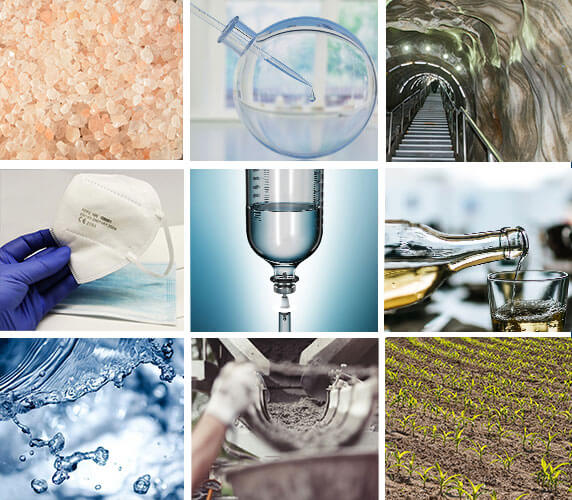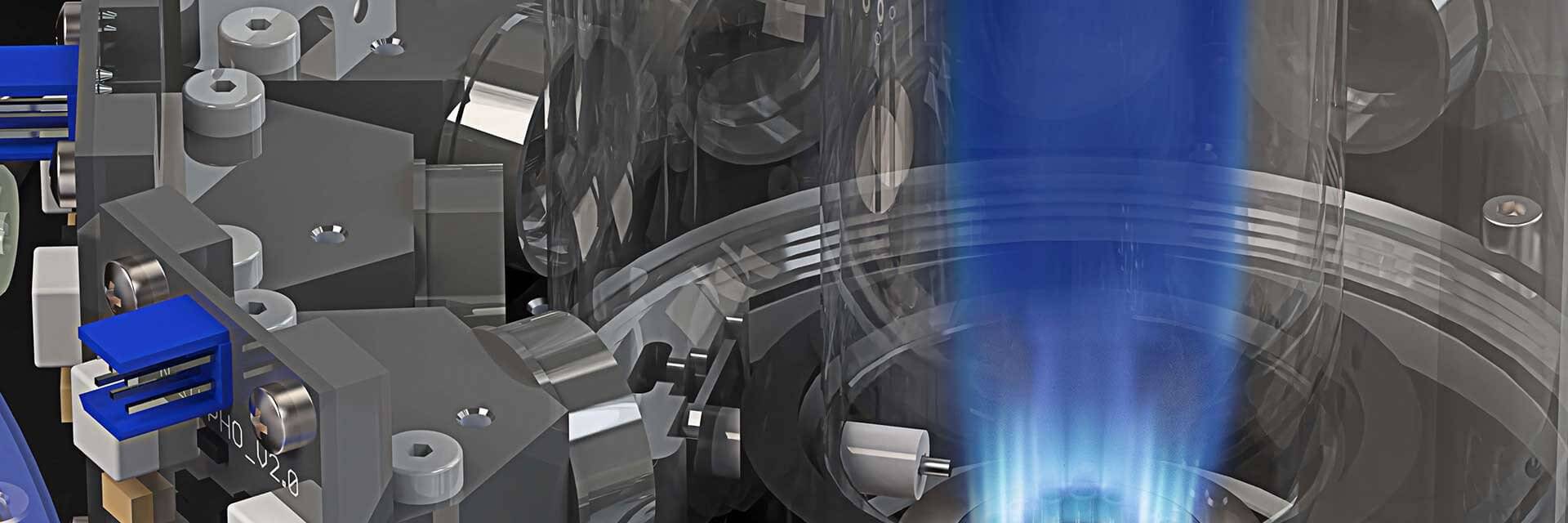
Flame Photometry (AES) - The cost-effective measurement of alkali and alkaline earth metals
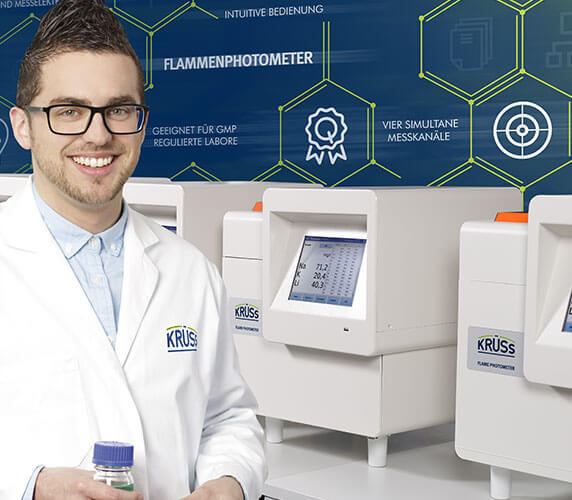
Currently, elemental analysis is often carried out with complex procedures such as AAS, ICP-OES, titration or with ion-selective electrodes. Now a change is emerging and the proven measurement technology of AES flame photometry is replacing these often very expensive and time-consuming techniques. Consistent modernisation of AES (Atomic Emission Spectroscopy) and a special focus on safety-related concepts are opening up completely new fields of application for many cost-sensitive customer groups – from automated incoming goods inspection to the qualification of FFP masks according to DIN 149.
What is being measured?
AES is particularly suitable for the quantitative determination of alkali elements such as sodium (Na), potassium (K) and lithium (Li) and earth alkaline elements like calcium (Ca). The measurement by flame photometer is carried out for these elements simultaneously in one step.
Measuring principle at a glance
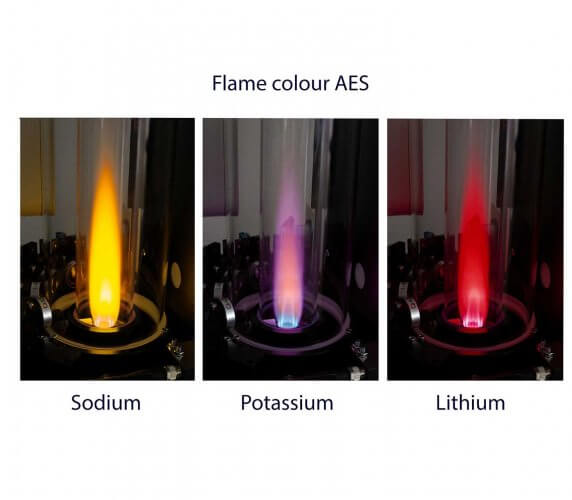
Everybody knows the basic principle of AES from the chemistry lab: if you bring potassium or alkaline elements into a hot flame, a flame colour characteristic of the respective element appears. In AES laboratory measurement, the substance for analysis is sucked in, as an aqueous solution, at a push with a button. The solution is then finely atomised with compressed air as a carrier gas (aerosol) and mixed with gas. After that, it is sprayed into a dimly lit flame. The thermal stimulation of the flame causes the atoms to emit light – each with its own characteristic wavelength.
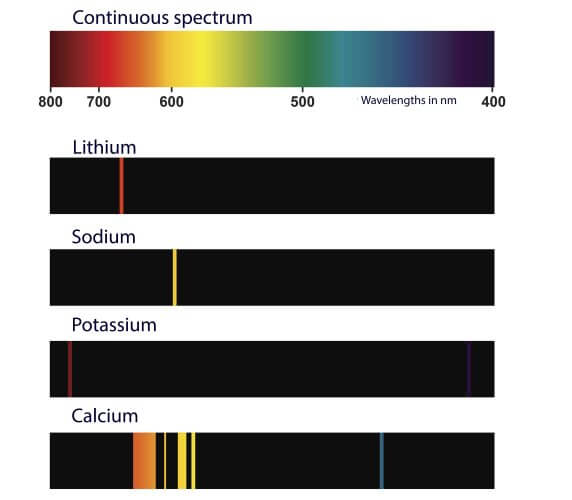
The emitted radiation is sorted by an optical filter, that fits to each element. The result of this is that only the light of one wavelength reaches the corresponding photodetector. By default, several detectors are used in parallel, so that the simultaneous determination of various elements is possible. The higher the concentration of an element, the more intense the emitted light is. The concentration of the measuring solution is determined via the luminance. Modern AES flame photometers automatically calculate the necessary curve adjustments that compensate for non-linear effects and enable high quantitative precision.
AES strengths
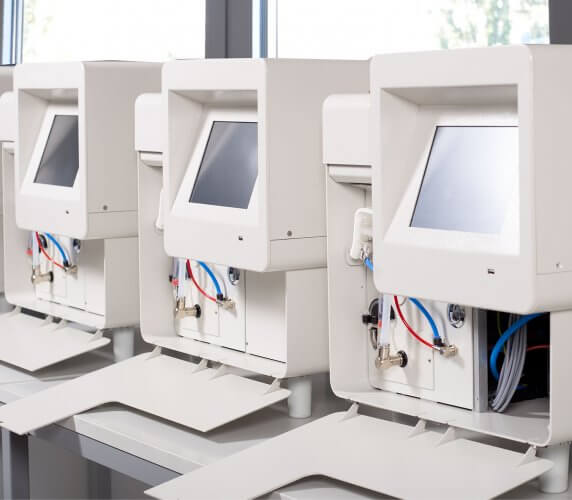
Low operating costs are one of the main strengths of AES; in addition, the technology of the FP8000 series from A.KRÜSS Optronic GmbH offers with high determination accuracy of Na, K, Li and Ca, as well as a high sample throughput. Completely modernised and improved safety concepts of the FP8000 series now allow operation even without the presence of laboratory technicians and thus analysis in 24/7 operation.
AES in comparison with other methods of measurement
| AES* | AAS | ICP - OES | Electrodes | Mass- spectrometer | |
|---|---|---|---|---|---|
| Measurable elements | Alkaline and earth alkaline elements | MANY | MANY | One element per electrode | ALL |
| Accuracy | HIGH | HIGH | HIGH | MEDIUM | VERY HIGH |
| Detection limit | ppb to ppm | ppb to ppm | ppb to ppm | ppb to ppm | ppt and below |
| Costs per measurement | LOW | MEDIUM | HIGH | LOW | VERY HIGH |
| Measuring rate | VERY FAST | MEDIUM | MEDIUM | SLOW | MEDIUM |
| Multi element measurements | YES | CONDITIONAL | YES | NO | YES |
| Operation | SIMPLE | ADVANCED | ADVANCED | SIMPLE | VERY ADVANCED |
| Method creation | VERY SIMPLE | SIMPLE | COMPLEX | SIMPLE | COMPLEX |
| 24/7 - Measurement mode | YES | YES | YES | PARTIALLY | PARTIALLY |
| *AES (Atomic Emission Spectroscopy) /flame photometer | |||||
Measuring rate and 24/7 - operation
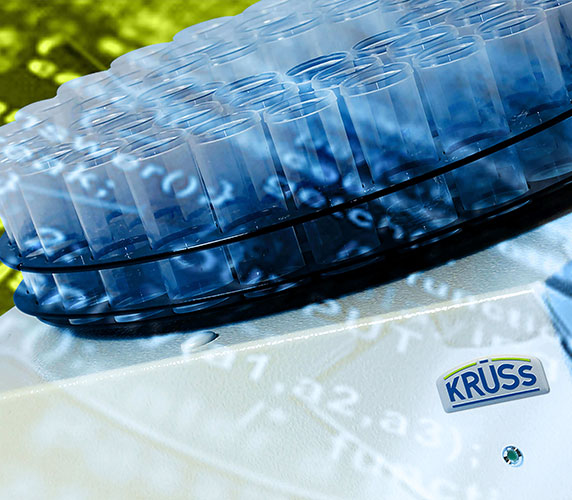
AES is very fast, the pure measuring process takes only a few seconds per sample and several elements can be recorded simultaneously. By integrating than autosampler and diluter, the FP8600 & FP8700 models operate as fully automatic devices and can effortlessly handle high measurement volumes in 24/7 operation; approx. 60-120 samples/hour depending on the model. With the FP8500 model, a process variant is also available that can switch automatically between calibration solutions and sample streams. This is used for the measurement of continuous liquid flows or very precise aerosol measurements.
An article about element analysis with flame photometer (AES) was also published in the scientific magazine LABO. You will find the entire August edition here as a download
PDF-download LABO August- edition
or you can read the online article right on the LABO website.
